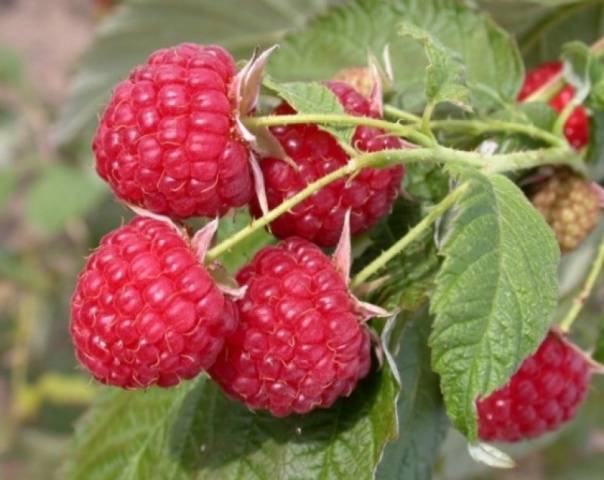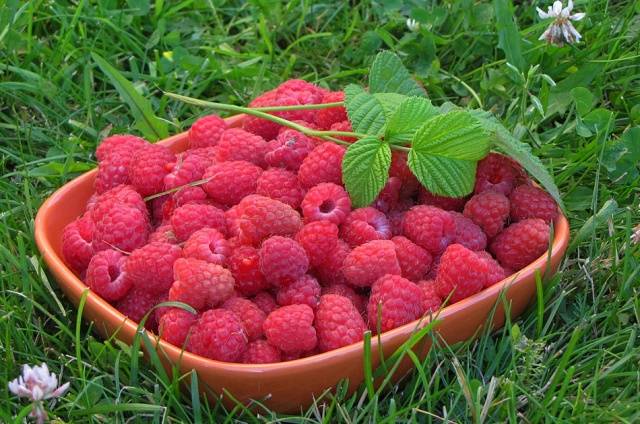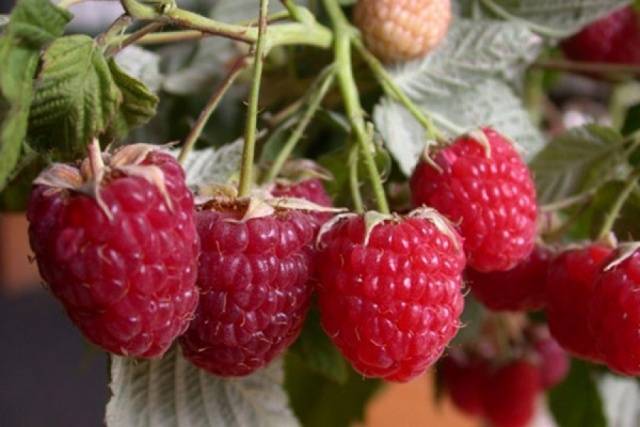Content
Gardeners call raspberries of the Kirzhach variety the pride of their collection. In the garden, the plant is noticeable among other raspberry bushes: the twigs are abundantly strewn with berries. Red, alluring, filled with delicious juice. Although raspberries of the Kirzhach variety spreads a little aroma, it is simply lost from a distance among other garden smells, but a luxurious bouquet of forest raspberries is felt near. There are many berries on the bush: some are already ripe, others are only painted with a faint pink light of the morning dawn, and behind them are still small ones - greenish, but with a tint of future splendor.
Red raspberries of the Kirzhach variety are attractive for their abundant harvest and long fruiting period. The plant is quite unpretentious, without special care requirements, and therefore the Kirzhach raspberry is popular. And the bushes of this plant bring irresistible charm to the garden not only with their lush green-red summer lace, but also with their farewell purple autumn cape. This is the color of the stems of the Kirzhach raspberry variety. Ornamental and leaves with large wrinkles: large, with a beautiful large toothed marginal pattern. The tip of the leaf along the central vein bends smoothly towards the stem.
Features of the variety
The old raspberry variety Kirzhach has existed for more than twenty years. The famous breeder V.V. Kichina, professor at the All-Russian Institute of Selection and Technology of Horticulture and Nursery, took the then-famous Carnival and Moling Promis as a basis. Raspberries of the Kirzhach variety were bred for the Central, North-West and Volga-Vyatka regions, in 1994 they were entered in the State Register. The plant is grown to the south, this raspberry withstands sudden winter thaws, but does not tolerate Siberian frosts.
Raspberry Kirzhach has a high yield, unpretentious to the composition of the soil. Ripens in medium terms, the berries are sour-sweet, with a typical raspberry flavor, wide at the base, conical, small by 2-3 grams. They scored 4.3 points on the tasting scale. Their valuable quality is dense pulp. Berries of raspberries of the Kirzhach variety can withstand long-distance transportation, are used for all kinds of preparations.
This is a strong plant, the Kirzhach raspberry bush can grow up to two and a half meters, there are few thorns, they are small, semi-rigid. Young green shoots are not pubescent, grow straight, two-year-olds are lignified. Last year's stalks of Kirzhach raspberries bear fruit.
And they practically all "wait" for the owners, as they are resistant to spontaneous fall: collecting a full basket of berries from the Kirzhach raspberry bushes is guaranteed for every summer resident.
All berries have time to ripen during the summer. Unlike fashionable remontant, large-fruited and early ripening varieties, the raspberry plant of this variety is not so demanding. Therefore, raspberries of the Kirzhach variety, which in any weather conditions of the intended climatic zone will provide a sufficient harvest, are a problem-free choice for non-professionals.
Disease resistance
When choosing raspberry plants for planting, gardeners are interested in such important characteristics as resistance to damage and disease. Raspberries of the Kirzhach variety are characterized by resistance to anthracnose and endurance against spider mites. The raspberry variety Kirzhach is susceptible to bacterial curliness and root cancer. Bushes found with this disease are destroyed by burning. On an infected site, raspberries are planted only in the fifth or sixth year.
The raspberry beetle is a dangerous plant pest, which must be fought with timely applied insecticides: Confidor, Kinmiks, Fitoverm. Usually the bushes are sprayed when the buds appear.
So this is a pretty hardy raspberry variety. Many summer residents confirm that there is no better raspberry for them than Kirzhach.
Proper planting and care - high-yielding raspberries
When planning the laying of a raspberry from the bushes of plants of the Kirzhach variety, you need to take into account the agrotechnical requirements. Planting and caring for raspberries is not particularly difficult, it is easy to grow it, observing the conditions.
- It is necessary to avoid places near water bodies and with stagnant groundwater. Constant high humidity threatens with frequent plant diseases;
- Raspberries love enough sun, are afraid of areas blown by the wind or draft. Strong air currents can injure the stems of the tall raspberry variety Kirzhach;
- It should be borne in mind that the Kirzhach raspberry bushes are tall: located in the south of the garden, they will shade it;
- Since raspberry Kirzhach gives a lot of growth, rows of bushes must be planted at least half a meter from each other, the step between plants is up to 40 cm;
- The best precursors for raspberries are grains or legumes;
- In the south and in the middle zone of the country, it is advisable to plant raspberries in the fall, most often in October. In the northern regions, planting is carried out only in the spring;
- The best option for caring for newly planted raspberry plants after watering is to mulch the area with humus, sawdust or straw.
A few days before planting a raspberry bush, dig holes. If the roots of the plant are large, they are deepened so that the buds are at least three centimeters under a layer of earth. From above, a neatly straightened root bunch of raspberries is sprinkled with humus, to which sand is also added.
Regular watering
Without watering, raspberries will lose their varietal characteristics, excessive growth of shoots and leaves on the bushes is possible. They grow due to the fact that the plant tries to find moisture in the air and expands its area. In late spring and early summer, the main job in the raspberry plant is abundant watering. The roots of the plant spread not only in width, but penetrate up to 30 centimeters downward. A volume of 20 liters of water per running meter will provide soil moisture saturation up to 35 cm deep. The root system of the raspberry bush will be able to obtain all the necessary substances from the soil.
Timely feeding and processing
The excellent taste and varietal aroma of Kirzhach raspberries are guaranteed if the soil contains all the trace elements necessary for the normal development of raspberries. Although the raspberry variety Kirzhach bears fruit well in almost all soils, with additional fertilizing, as gardeners report, the yield from a bush reaches more than 4 kg. It is important to adhere to the periodicity.
- In the spring, during the loosening of the soil (no deeper than 10 cm !, especially near the bush), it is enriched with mullein - 8 kg per 1 square meter;
- To accelerate the growth of stems and strengthen them, use 20 g of urea per bucket of water;
- During flowering, plants are treated with boric acid: 20 g per bucket of water;
- Watering with nitrophosphate (from 20 to 30 g per 10 liters of water) is useful in the formation of fruits;
- During autumn loosening, as usual, potash-phosphorus fertilizers are applied: 25 g of superphosphate and 15 g of potassium chloride per bucket of water.
Growing raspberries even of such an undemanding variety as Kirzhach provides for treatments against insects and pathogens. After 2-3 leaves appear on the stems, the bushes are sprayed with insecticide and fungicide: 2 g of Fufanon and 25 g of Ridomil per bucket of water.The first drug will protect raspberries from ticks, raspberry flower beetle, gall midges, and the second from purple spot, curl and other fungal diseases.
Pruning and garter
Sick and weak shoots are cut off, the thickened bush is thinned out. The stem is shortened by twenty centimeters. In the spring, dead plants are removed and damaged ones are cut off.
The garter of plants protects against diseases: the stems do not bend or break. And it is much more convenient to collect.
Proper care of the bushes is the key to a stable harvest.













